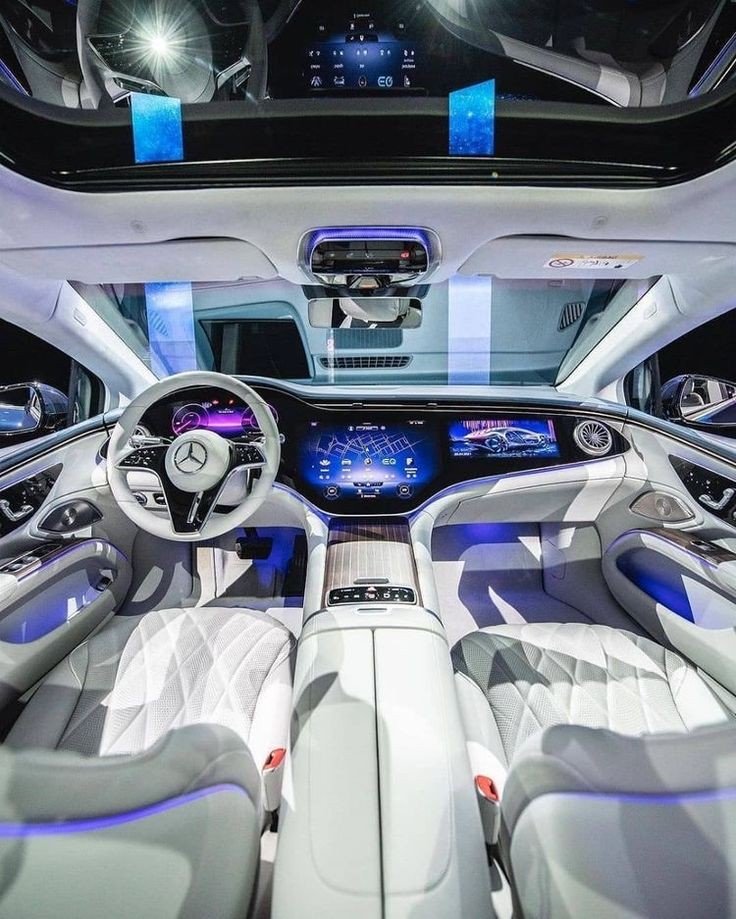
Electric buses are transforming public transportation worldwide. They offer a sustainable, quiet, and efficient solution to reduce pollution in urban areas and meet the growing demand for cleaner public transit options. Cities across the globe are investing in electric buses as part of their climate and transportation strategies, aiming to replace diesel buses and reduce greenhouse gas emissions. This article explores the impact, benefits, and challenges of electric buses in public transportation, along with examples of cities leading the way in electric bus adoption.
Why Electric Buses?
Public transportation is essential for reducing traffic congestion and emissions in cities. However, traditional diesel buses contribute significantly to urban pollution and greenhouse gas emissions. Electric buses offer a cleaner alternative, emitting zero exhaust pollutants and operating more efficiently. The shift to electric buses in public transit systems is part of a broader movement toward sustainable urban mobility, helping cities meet air quality targets, reduce noise pollution, and improve overall quality of life.
Key Benefits of Electric Buses
Electric buses provide several benefits to cities, the environment, and public health.
- Reduced Air Pollution: Diesel buses release pollutants like nitrogen oxides (NOx) and particulate matter, which contribute to smog and respiratory problems. Electric buses produce no tailpipe emissions, helping to improve air quality in densely populated areas.
- Lower Greenhouse Gas Emissions: Electric buses, especially when charged using renewable energy sources, emit significantly fewer greenhouse gases than diesel or natural gas buses. They help cities lower their carbon footprint and contribute to climate goals.
- Cost Savings: Although electric buses have a higher upfront cost, they offer long-term savings on fuel and maintenance. Electricity is generally cheaper than diesel, and electric buses have fewer mechanical parts, reducing the need for frequent repairs.
- Reduced Noise Pollution: Electric buses operate much more quietly than diesel buses, reducing noise pollution in urban areas. This is particularly beneficial in residential neighborhoods and contributes to a more pleasant urban environment.
- Energy Efficiency: Electric motors are more energy-efficient than internal combustion engines. Electric buses convert a higher percentage of energy from the grid into movement, making them more efficient and reducing energy consumption.
Types of Electric Buses
Electric buses come in various types, each designed to meet specific needs within public transit systems.
- Battery Electric Buses (BEBs): BEBs are powered solely by batteries, which are charged using electric charging stations. They are the most common type of electric bus in cities and are suitable for short- to medium-range routes.
- Plug-in Hybrid Electric Buses (PHEBs): These buses combine an electric battery with a diesel or natural gas engine. They primarily run on electricity but can switch to fossil fuel as a backup. PHEBs are often used in cities transitioning from diesel to electric fleets.
- Fuel Cell Electric Buses (FCEBs): FCEBs use hydrogen fuel cells to generate electricity onboard, which powers the bus. These buses offer longer ranges than BEBs and can refuel quickly, making them suitable for longer routes and high-frequency services.
- Trolleybuses: Trolleybuses run on electricity supplied by overhead wires and have been used in public transportation for decades. Some modern trolleybuses have batteries that allow them to travel short distances without overhead lines, adding flexibility to their routes.
Challenges in Adopting Electric Buses
While electric buses offer clear advantages, their adoption faces certain challenges.
- High Initial Costs: Electric buses typically cost more than diesel buses, which can strain municipal budgets. Although they offer long-term savings, the initial investment in the vehicles and charging infrastructure is substantial.
- Charging Infrastructure: Electric buses require extensive charging infrastructure, which can be challenging and expensive to install. Cities need to establish sufficient charging stations, either at bus depots or along bus routes, to ensure that buses can operate throughout the day.
- Range Limitations: Battery electric buses have limited range, usually between 100 and 300 miles per charge, depending on battery capacity and route conditions. For cities with long routes or extreme climates, range limitations can be an issue.
- Charging Time: Fully charging an electric bus takes longer than refueling a diesel bus. Although fast-charging options are available, they can place significant demand on the electric grid, requiring grid upgrades in some areas.
- Battery Degradation: Batteries lose capacity over time, which can reduce the range and efficiency of electric buses. Replacing batteries is costly, and battery disposal raises environmental concerns, although advancements in battery recycling are helping to address this issue.
Electric Buses Around the World: Leading Examples
Several cities have emerged as leaders in adopting electric buses, setting an example for others to follow.
- Shenzhen, China: Shenzhen became the first city in the world to electrify its entire bus fleet. With over 16,000 electric buses, the city has significantly reduced its carbon footprint and improved air quality. Shenzhen’s success demonstrates the feasibility of large-scale electric bus adoption in urban areas.
- London, United Kingdom: London has integrated electric buses into its public transit system as part of its plan to achieve zero emissions by 2050. The city has introduced several all-electric routes and continues to expand its fleet. London also operates hydrogen-powered buses, highlighting its commitment to exploring multiple sustainable options.
- Los Angeles, United States: Los Angeles has committed to converting its entire bus fleet to electric by 2030. The city has already introduced hundreds of electric buses and has implemented solar-powered charging stations to support them. This transition aligns with California’s ambitious climate goals and makes LA a leading example in the U.S.
- Paris, France: Paris has made significant investments in electric buses as part of its anti-pollution initiatives. The city aims to convert its entire fleet to electric by 2025, with a mix of battery electric and hydrogen fuel cell buses. Paris’s approach includes both long-term goals and immediate action to improve air quality in the city.
- Santiago, Chile: Santiago has become a leader in electric bus adoption in Latin America. The city has partnered with international companies to deploy hundreds of electric buses, helping to reduce emissions and improve air quality. Santiago’s electric buses have made public transportation cleaner and more reliable for its residents.
The Future of Electric Buses in Public Transportation
The future of public transportation is electric, and cities worldwide are working to overcome challenges and accelerate the adoption of electric buses. Technological advancements in battery technology, charging infrastructure, and vehicle design are making electric buses more accessible and practical for urban transit systems.
- Battery Advancements: Research into lithium-ion and solid-state batteries is helping to improve the range, charging speed, and durability of electric buses. As battery technology advances, electric buses will become more viable for longer routes and more demanding urban settings.
- Infrastructure Development: Governments and private companies are investing in charging infrastructure to meet the growing demand for electric buses. This includes installing fast-charging stations along major routes and using solar or wind energy to charge buses sustainably.
- Policy Support: National and local governments are introducing policies and incentives to support electric bus adoption. These policies include grants, tax incentives, and stricter emission standards, encouraging cities to transition to electric fleets.
- Fleet Electrification: Cities around the world are setting ambitious targets to electrify their public transportation fleets. This shift will not only reduce emissions but also set a precedent for other sectors to follow in the transition to electric mobility.
- Integration with Renewable Energy: As more cities aim to power their electric buses with renewable energy, the environmental impact of public transportation will further decrease. Integrating solar, wind, and hydropower into charging infrastructure is a crucial step toward achieving zero-emission transit systems.
Conclusion
Electric buses are playing a transformative role in public transportation, offering a cleaner, quieter, and more sustainable alternative to traditional diesel buses. Cities like Shenzhen, London, and Los Angeles are leading the way, demonstrating the benefits of electric bus adoption for urban areas and inspiring other cities to follow suit. While challenges remain, advancements in technology and supportive policies are making it increasingly feasible to electrify public transit fleets globally.
Electric buses represent more than a technological shift; they symbolize a commitment to environmental stewardship, public health, and sustainable urban growth. With the right infrastructure, investment, and vision, cities can transform their public transportation systems and pave the way for a cleaner, greener future.
ALSO READ: Evolution of Tesla: A Look at All Models Over the Years





